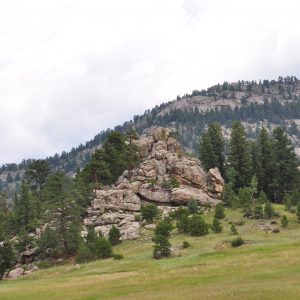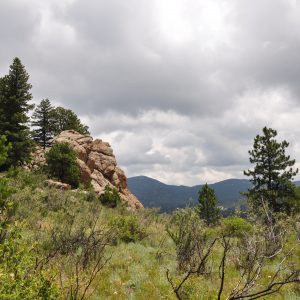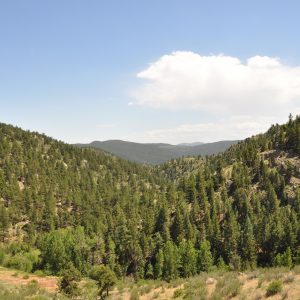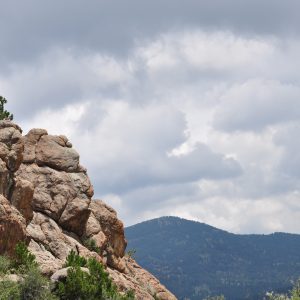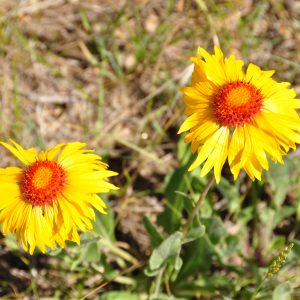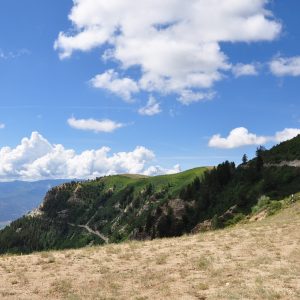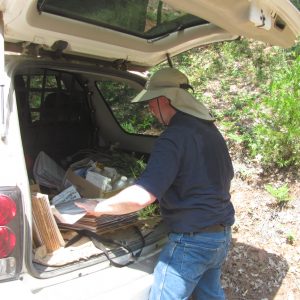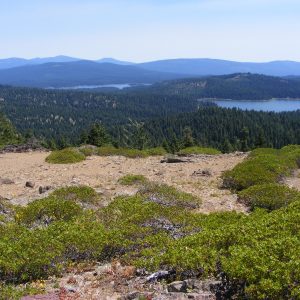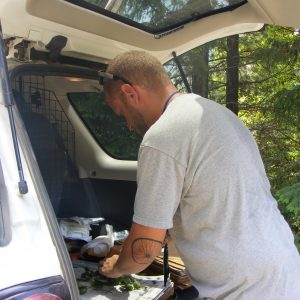It is hard to believe that another month has past. My internship is speeding by, and I am currently trying to find a housing option that will allow me to extend my time here in Safford, AZ.
The monsoon season has begun and the storms are glorious. I’ve never seen such beautiful cloudy skies. The lightening shows are my favorite. Sometimes I sit outside for extended amounts of time and watch the lightening dance across the sky. Its not uncommon to have half the sky a sunny bright day and the other be a dark foreboding storm. I enjoy the juxtaposition. So far the rains haven’t kept us from any of our work, merely brought a little humidity and some water to the trickling streams.


This past month, our crew worked hard on green sunfish removal in Bonita Creek. The work seems to be paying off. Contract workers from Phoenix have been down twice to help us clear out the non-natives, and as of the last net setting, three pools came back completely greenie free! So that is really encouraging. Unfortunately, poor Bonita Creek is experiencing some drying. The city of Safford uses the spring that feeds Bonita Creek as their water source, and the result is several large beautiful pools being depleted to nothing. We have set nets in these drying pools to try to catch and relocate natives, and give non-natives a more humane death then suffocation.
My work in desert plants is beginning to accelerate now, which is exciting. The BLM in Safford has partnered with the Gila Watershed Partnership and Eastern Arizona Community College to build a new greenhouse at Discovery Park. The greenhouse will be a shared space. The BLM is using their portion to grow out native plants for restoration projects. We are supposed to work on a pollinator garden by the greenhouse sometime soon as well. This last weekend our BLM crew, a group from the Sky Island Alliance, and the Nature Conservancy all worked together on a restoration project on Turkey Creek and Cobra Ranch in the Aravaipa Wilderness. We stayed at a lovely Nature Conservancy field house. Getting to meet volunteers and employees from these different organizations was really fun. One of my favorite parts of my internship thus far has been meeting so many new people that are passionate about the same things I am. It makes me feel like there are enough like-minded people around that we can really make a change.
The work was great as well. We were planting Giant Sacaton mostly, but also some Cottontop. The Turkey Creek area use to be home to goat ranchers, and the Giant Sacaton grassland that used to exist has mostly vanished. Gaint Sacaton is an important riparian plant because its roots can grow 15 ft down. It provides balance for the water table and holds water in the soil longer. Also, if the area floods and the plants become covered in silt and soil, Giant Sacaton has the ability to grow up through the soil. We are hoping that by restoring the Giant Sacaton to this area, the Turkey Creek floodplain area will become a stable riparian grassland area again. The Giant Sacaton planted at Cobra Ranch is being used in a similar way. Stowe gulch feeds into Aravaipa creek and serves as a wash during floods. The Nature Conservancy, who manage Cobra Ranch, is trying to reintroduce a meandering pathway and slow the flow of Stowe gulch to reduce sediment runoff. Thus, the Giant Sacaton was planted in strategic areas to build up soil and hopefully influence the flow of the gulch. So much planning and strategy have gone into these projects. I learned so much in one weekend of restoration work, but also got my eyes opened to how much I don’t know about this field. We have several more restoration projects planned and I’m excited to keep learning about this type of work!

This is what our seedling Giant Sacatons will grow to become hopefully!
We have started prepping our target list for SOS collections. I sorted through the herbarium to find samples of the plants we will be collecting from. These samples will serve as my study guide so I can be sure to accurately identify plants in the field.

I was also fortunate enough to have time off and the funds to visit home for the Fourth of July. I got to visit family and friends and come back to Safford feeling totally refreshed. I’m ready for another month of new adventures and lots of learning!


